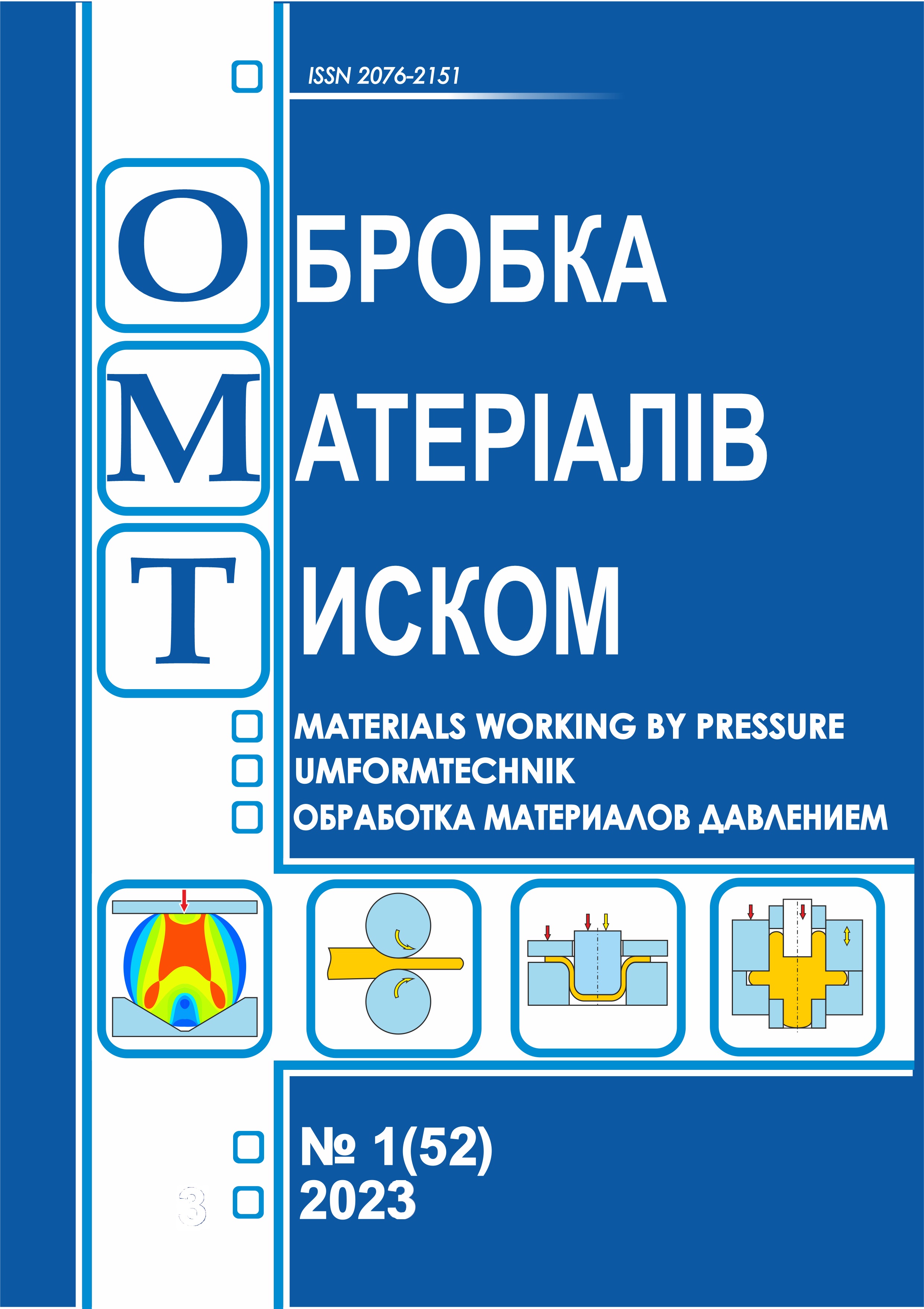Application of a profiled deforming tool for hot crimping of axisymmetric hollow workpieces
DOI:
https://doi.org/10.37142/2076-2151/2023-1(52)32Keywords:
crimping, hollow workpiece, finite element method, dies tooling, profiled tool, unit force, stress-strain state.Abstract
Kaliuzhnyi O., Gornostai V., Levchenko V. Application of a profiled deforming tool for hot crimping of axisymmetric hollow workpieces
Mathematical models using the finite element method were created and studies of the forward and backward methods of hot crimping using a traditional deforming tool and a special profile one were carried out. Hollow workpieces made of high-carbon steel with variable wall thickness in height for crimping with heating of the part of the wall to be deformed to the hot deformation temperature were used. The plastic model of continuum for finite element method simulation of the process was used and the problem was considered in cylindrical coordinate system. It has been determined that it is impossible to obtain a product of the required dimensions in one operation by forward and backward crimping with a traditional tool. The conducted calculations showed, that the use of a die and a container of a special profile with a deforming surface made with annular protrusions and depressions allows to obtain the product in one operation due to decreasing the influence of friction forces during forming. The deformation velocity required to provide the hot deformation regime during the crimping process is determined, and the final distribution of the metal temperature is given. The lows of dependence for the axial force on the deforming tool vs the movement of the punch for forward crimping and die for backward one and the distribution of unit forces on the contacting surfaces were obtained. It was found that the use of forward crimping leads to relaxation of force regimes and to decreasing unit forces on the tool. The final stress-strain state of the metal, the shape and dimensions of the product were also determined. Based on the distribution of effective strain, the working of the metal structure by plastic deformation was evaluated. The design of a general type of dies tooling for forward crimping developed based on results of the simulation was given.

